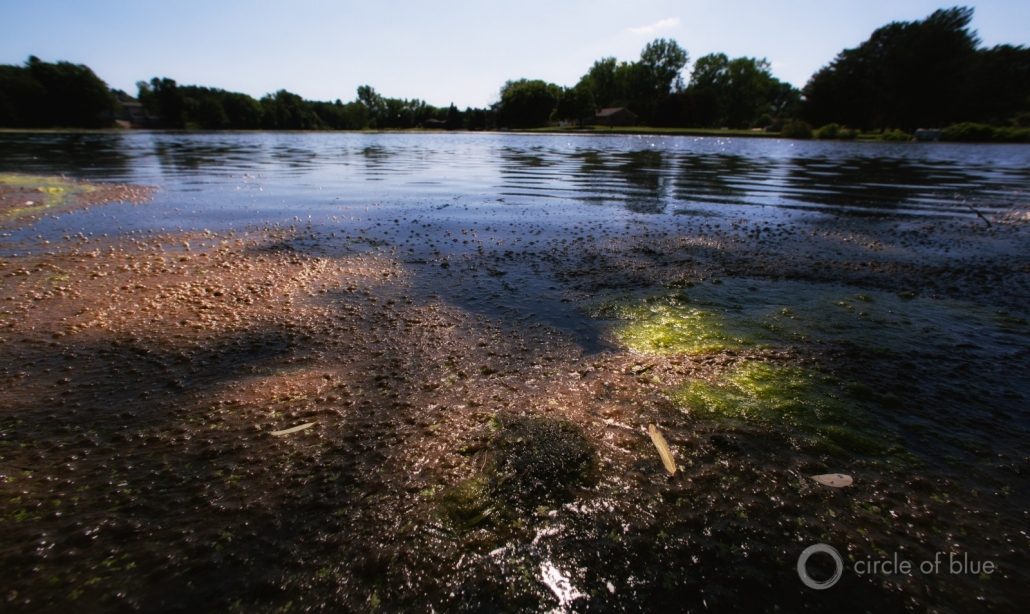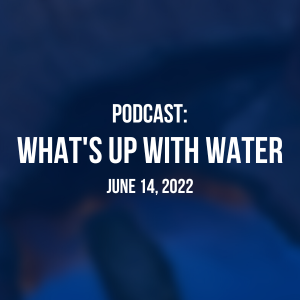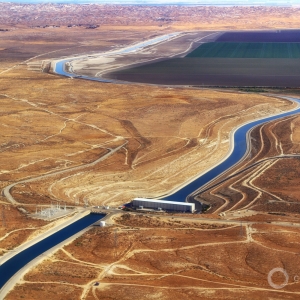The Stream, June 15, 2022: Scientists Call on Global Leaders to Reduce Phosphorus Contamination by 2050

Phosphorus and nitrates are just a two of many contaminants plaguing the Pine River that runs through Michigan’s Gratiot County. Photo © J. Carl Ganter / Circle of Blue
YOUR GLOBAL RUNDOWN
- Scientists call for action on global phosphorus contamination in a new report.
- Parts of Yellowstone National Park are underwater as heavy rain and melting snow cause rivers to overflow.
- Climate-induced disasters like flooding raise the risk of contamination for private well owners in America.
- A Hispanic community in Colorado battles a local steel mill that they say is polluting a nearby creek.
A major reservoir in Chile witnesses its lowest-recorded water levels amid a historic drought.
“We have to beg God to send us water.”
– Amanda Carrasco, a resident near the Penuelas reservoir.
A historic drought is causing the Penuelas reservoir in central Chile to dry up. Residents who have lived on the reservoir for years, like Carrasco, say they have never seen water levels this low in the past. Low levels of rainfall in the summer, paired with low snowpack in the Andes and thus less melt in the spring, have left the body of water that was once the main water source for the city of Valparaiso in poor condition.
— Jane Johnston, Stream Editor
In Recent WaterNews
What’s Up With Water–June 14, 2022 – This week’s episode of What’s Up With Water covers how Bolivia’s gold rush is polluting rivers, a resurgence of nitrate pollution in Iowa, and the expansion of desalination in Egypt. Plus, Circle of blue explores what happens if one of the most powerful hydroelectric dams in the United States stops generating power.
Scientists Call For Action on Phosphorus Contamination
In a report released last week, scientists have called for global leaders to tackle the poor management of phosphorus, a nutrient commonly used in farm fertilizer. Overuse of the nutrient has led to the contamination of more than half of rivers and lakes in the United Kingdom alone. The scientists behind the paper, including Dr. Will Brownlie, a freshwater scientist at the University of Edinburgh, are advocating for a “50:50:50” goal. The goal aims to reduce global phosphorus pollution by 50 percent, while increasing phosphorus recycling by the same amount, all by 2050. “If we do this, we will return 8.5 million tonnes of phosphorus to our farms that could support a food system that could provide enough food for four times our population,” Brownlie told the Independent.
- Why it matters: In the United States, excess nutrients like phosphorus and nitrate can kill any life present for miles around a body of water. If ingested by humans, high levels of nitrate can cause birth defects, liver damage, and cancer. Small farming communities across the country, like those in Michigan and Nebraska, are struggling to grapple with the impact of their livelihood.
This Week’s Top Water Stories, Told In Numbers
2.5 INCHES
Parts of Yellowstone National Park received 2.5 inches of rain over the weekend, which – paired with snow melt from the winter – caused rivers to overflow and flood nearby areas. No injuries had been reported as of Tuesday, but officials reported roads and bridges had been washed out, homes were damaged, and visitors and residents were evacuated. The floods completely cut off road access to one small Montana community. The deluge struck the national park at the height of tourism season. Yellowstone’s superintendent, Cam Sholly, said it was unclear when the park would reopen.
53 MILLION
Climate-induced disasters like flooding are raising the risk of water contamination for the 53 million Americans that rely on private wells. Without the regulation and treatment afforded by larger municipal systems, rural communities that rely on private wells may be unknowingly exposed to viruses, bacteria, and contamination from chemicals or elements like lead. Heavy rain events that cause flooding can heighten the risk. Although some states like New Jersey and Rhode Island are some regulatory practices in place for private well owners, most states rely on public outreach and involuntary action. This leaves many well owners uneducated about the risks associated with their water.
- In context: A 2019 report from Environmental Working Group and Iowa Environmental Council found that private wells in Iowa, especially those shallower than 50 feet, are exposed to increasing levels of nitrate and are at the highest risk for bacterial contamination. A year earlier, Circle of Blue reported that floodwaters from Hurricanes Florence and Michael caused bacteria counts in private wells to rise across the Southeast.
On the Radar
Environmental advocates and a Hispanic community in Pueblo, Colorado are banding together to tackle pollution in a nearby creek. Residents say the creek has been contaminated with wastewater from a local steel mill. One resident said she and other community members used to simply refer to Salt Creek as “the black water” because of how visibly polluted the waters became. Advocates for the rivers say that local officials have put the economic benefit of the steel mill over the creek’s environmental quality. Many are now calling for the polluters to be held responsible and are asking for regulatory changes to stop further pollution.
More Water News
After officials in the Mexican city of Monterrey imposed new water cuts that leave residents without water for hours or days at a time, residents are calling out inequities in water access.
Thousands of people in Mariupol could contract cholera and other deadly diseases as rising death tolls from Russian attacks are leaving bodies uncollected throughout the city.
Jane is a Communications Associate for Circle of Blue. She writes The Stream and has covered domestic and international water issues for Circle of Blue. She is a recent graduate of Grand Valley State University, where she studied Multimedia Journalism and Women, Gender and Sexuality Studies. During her time at Grand Valley, she was the host of the Community Service Learning Center podcast Be the Change. Currently based in Grand Rapids, Michigan, Jane enjoys listening to music, reading and spending time outdoors.







Leave a Reply
Want to join the discussion?Feel free to contribute!